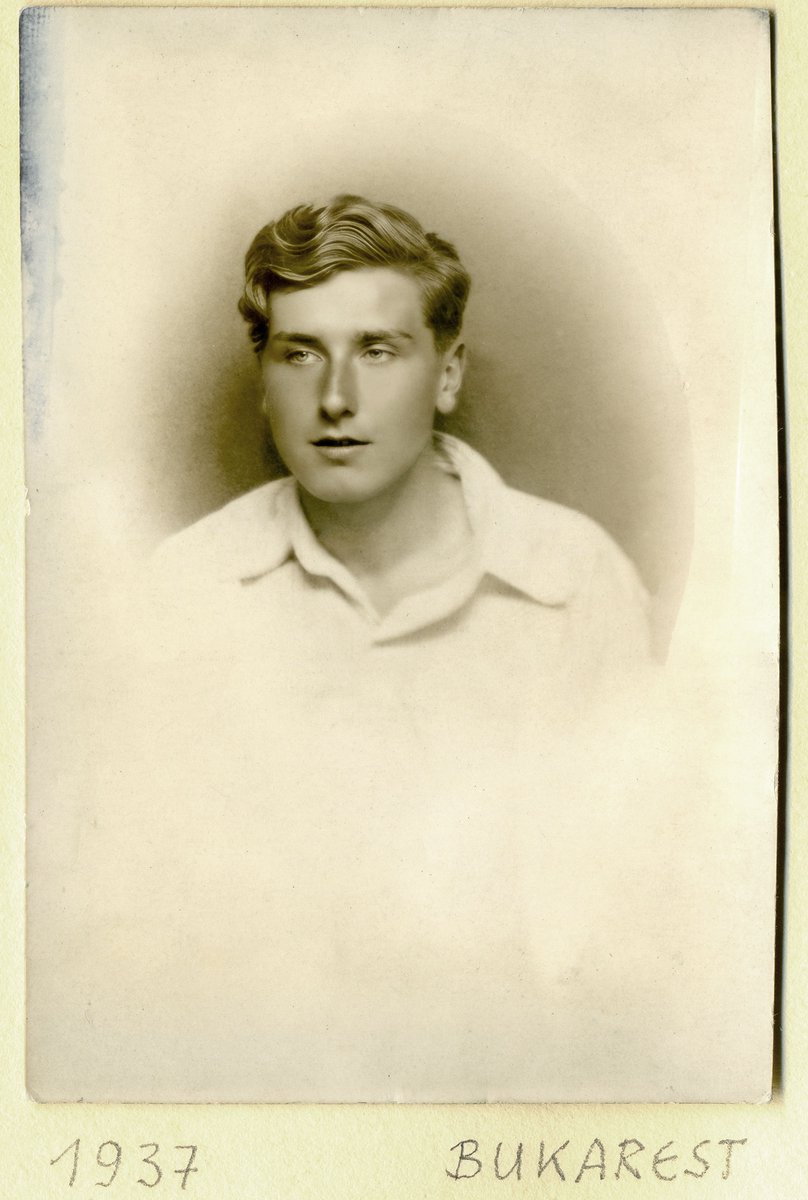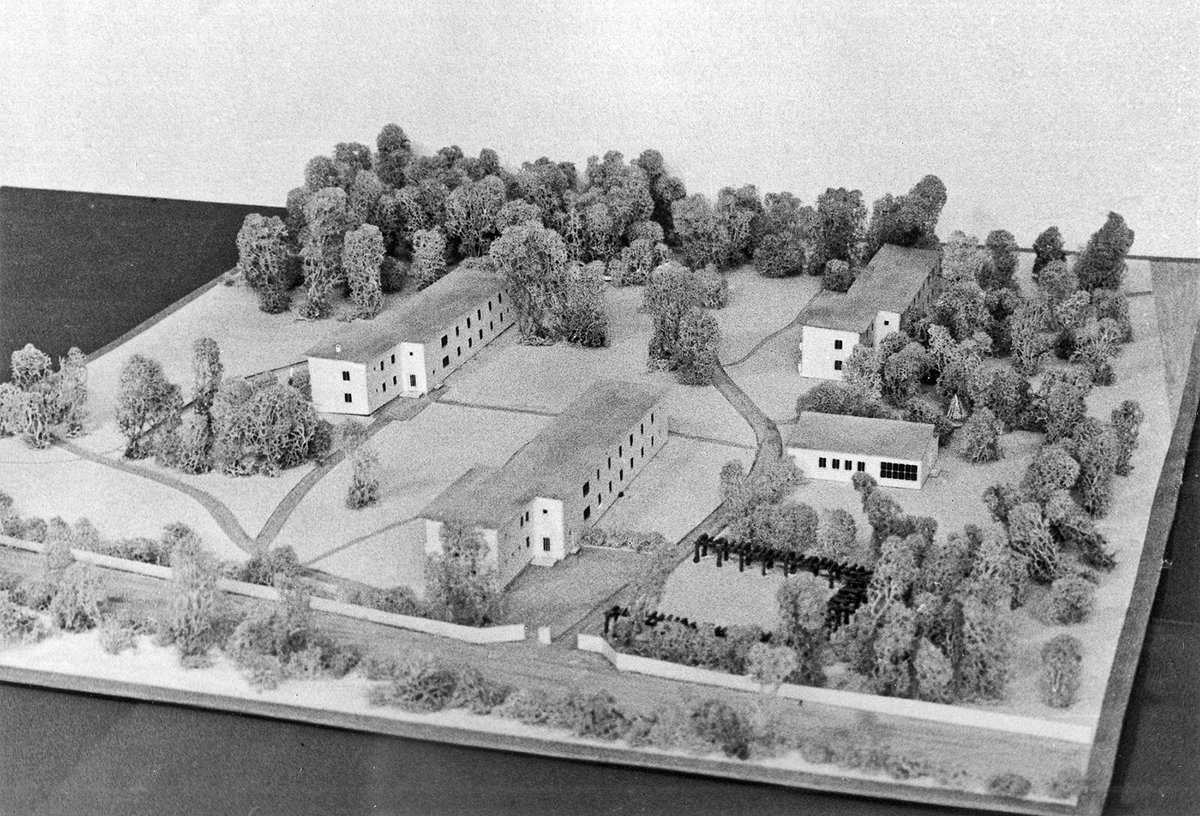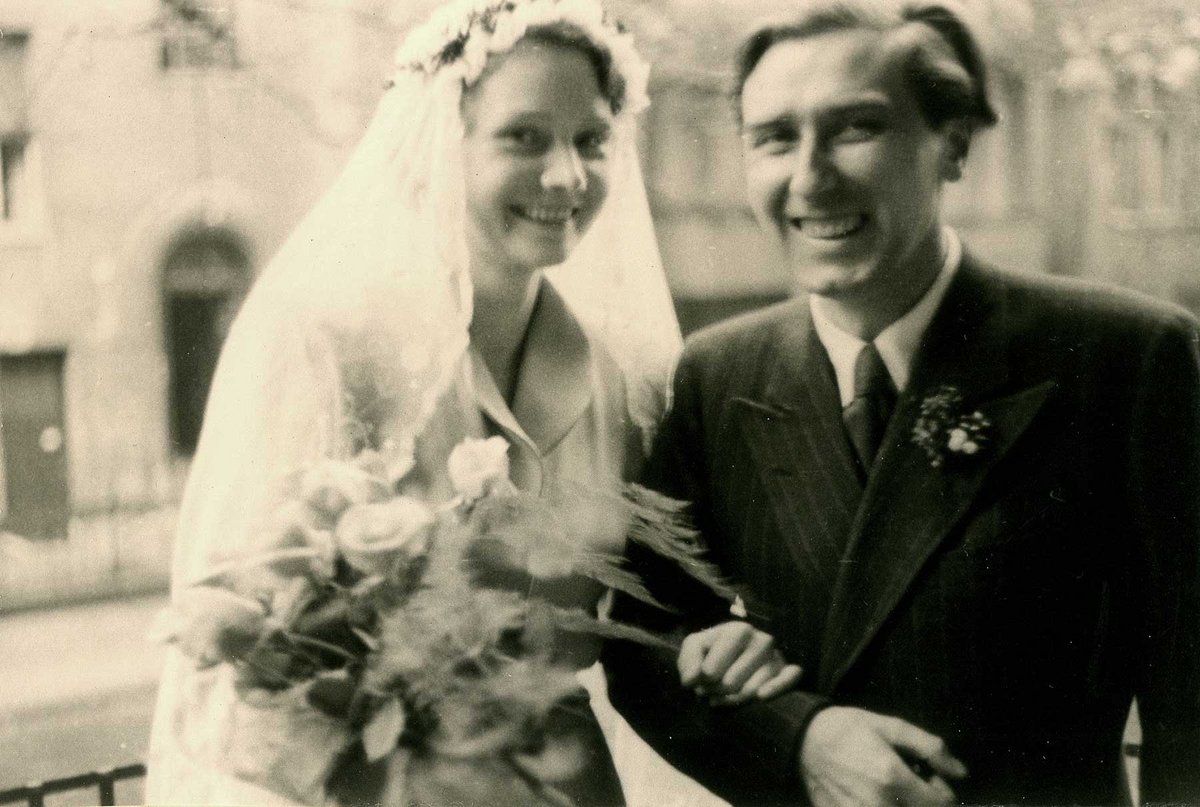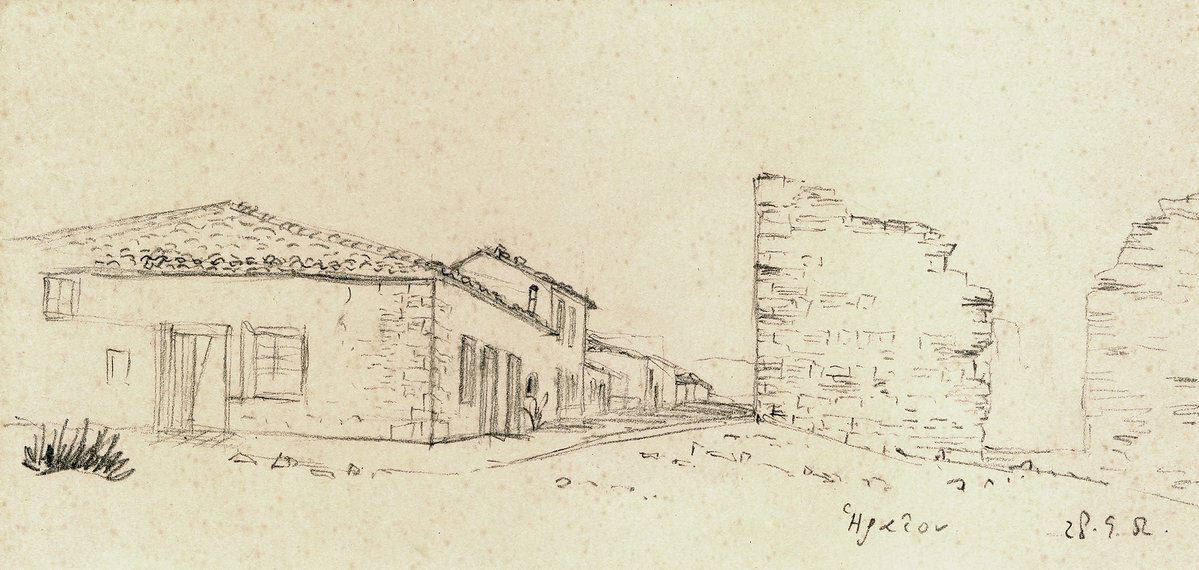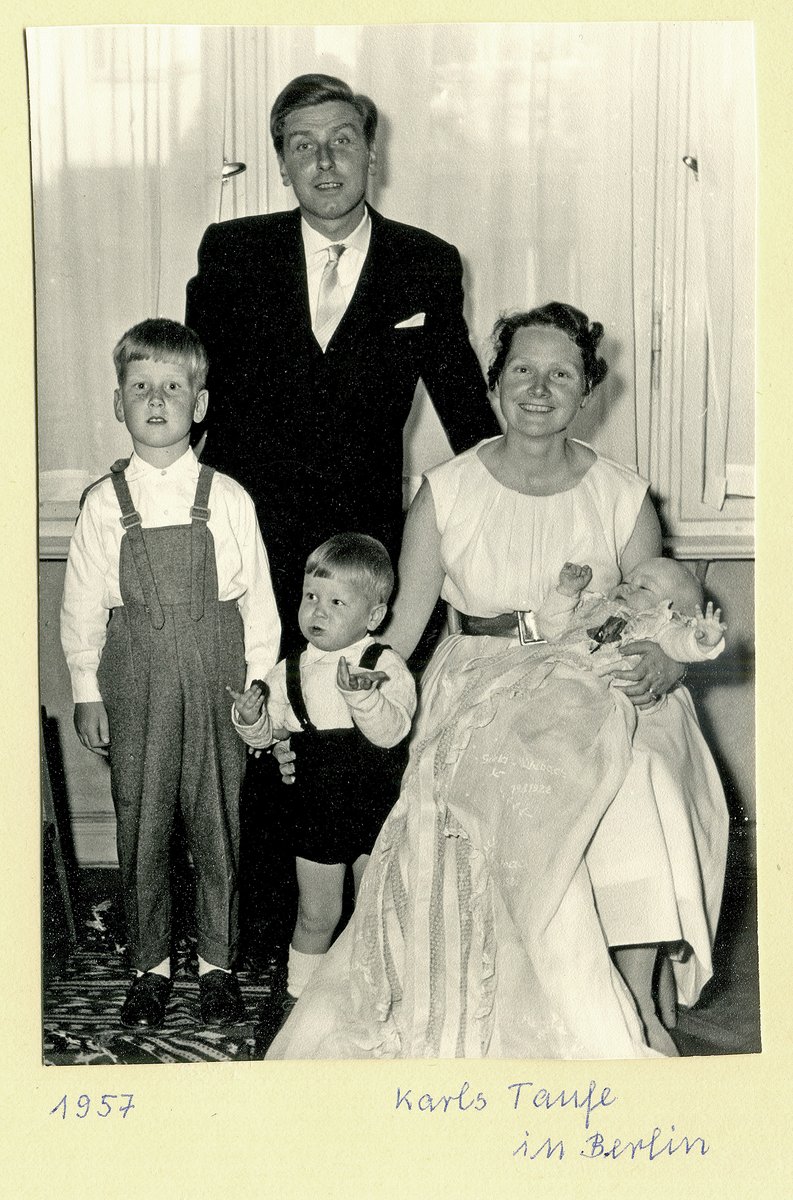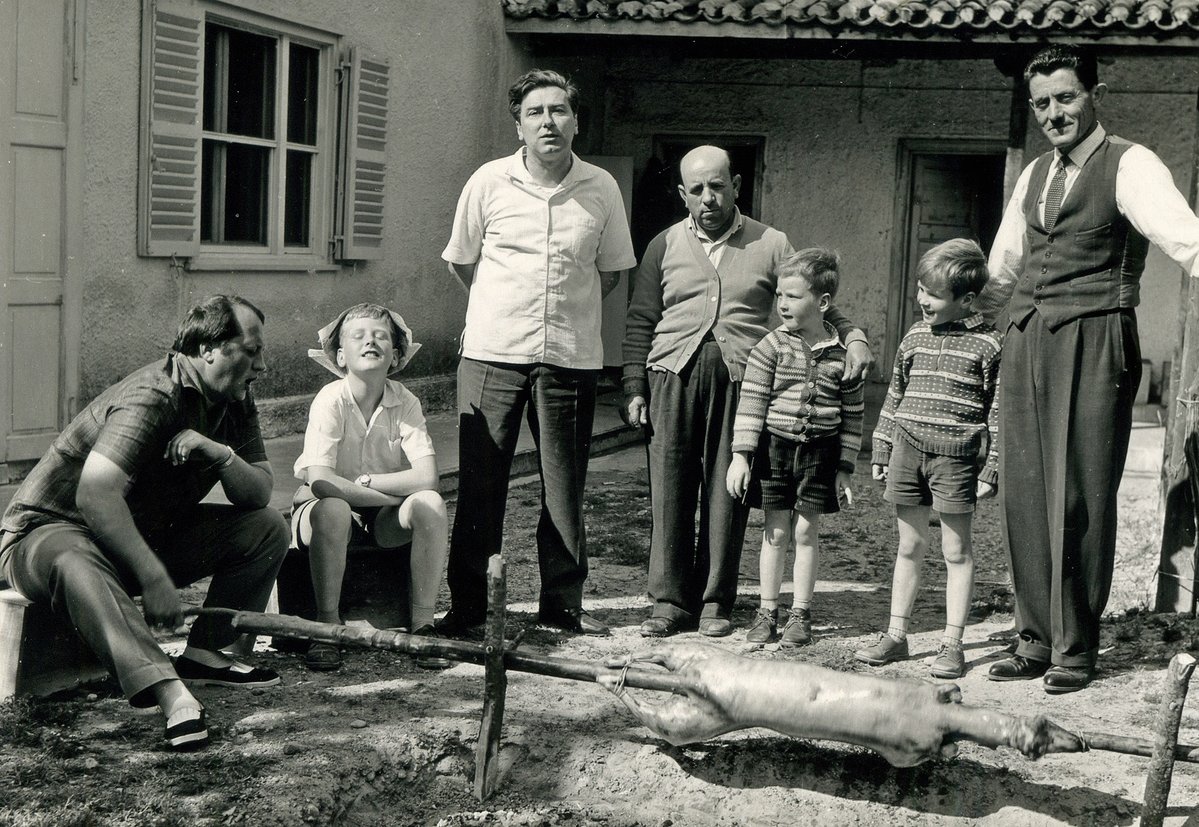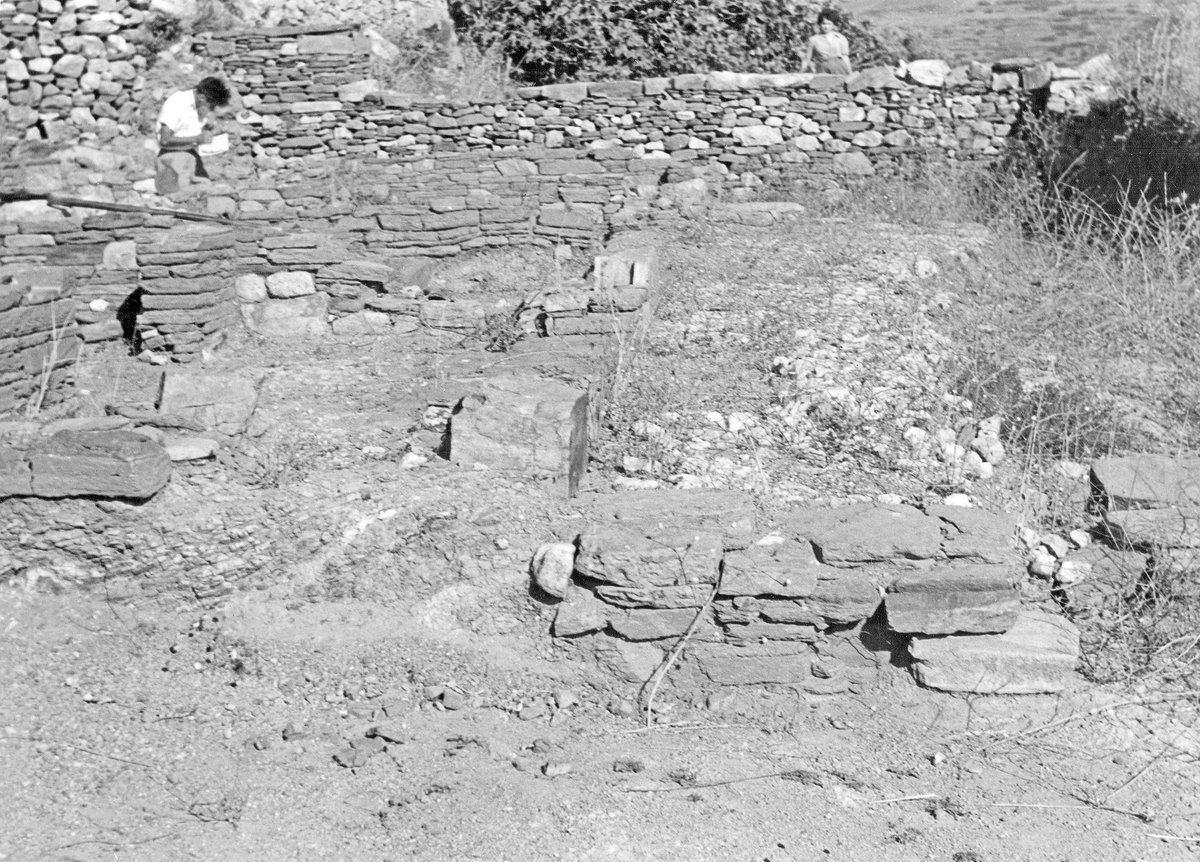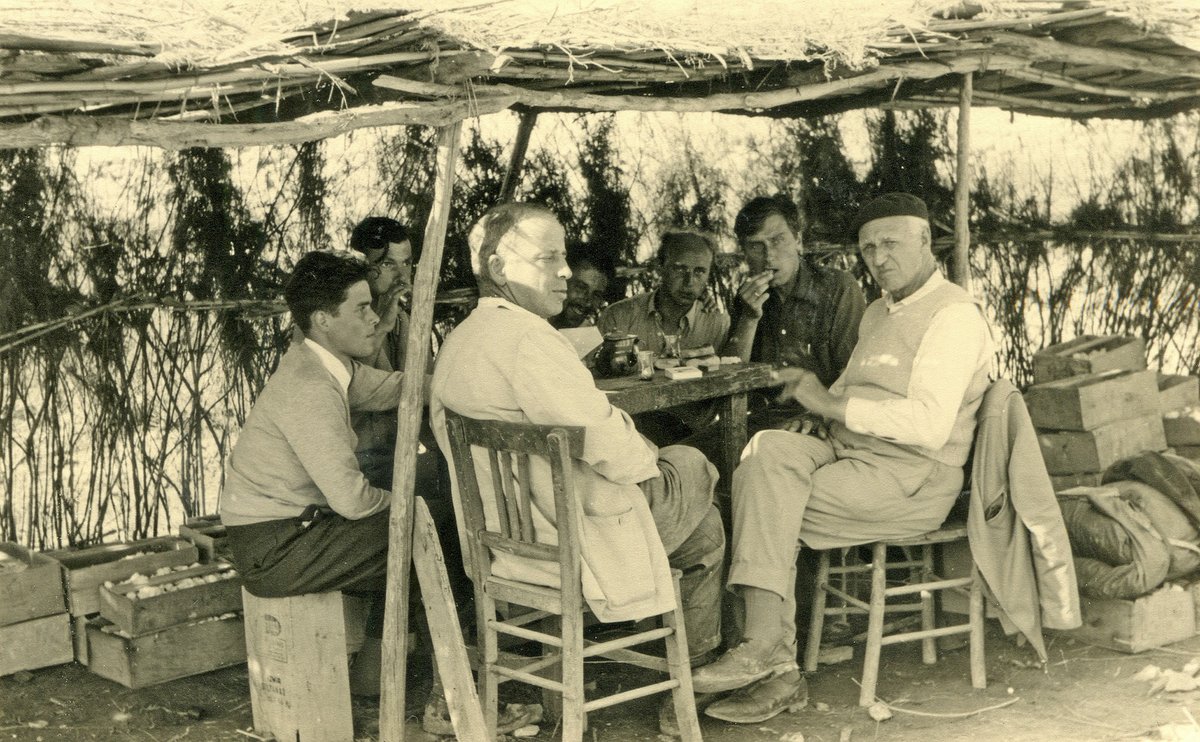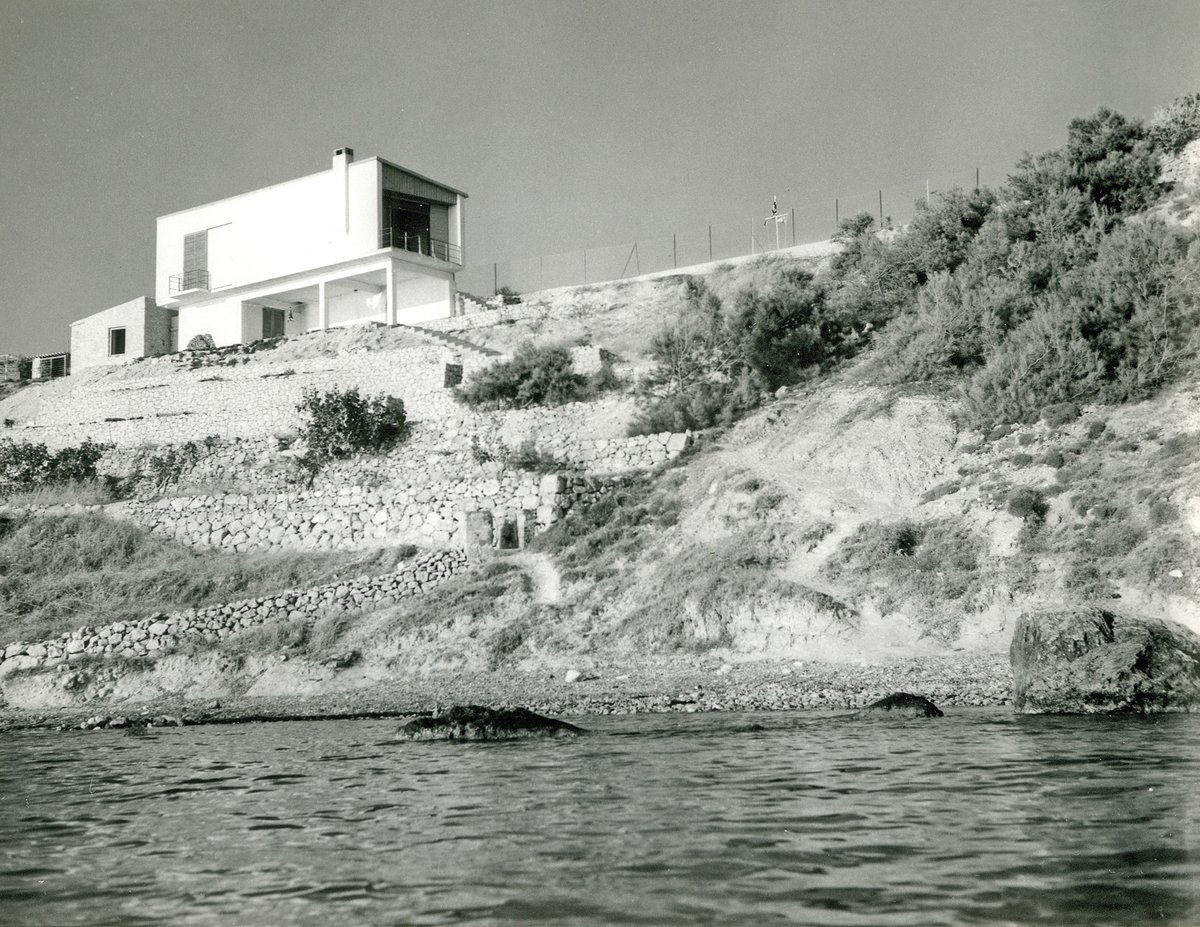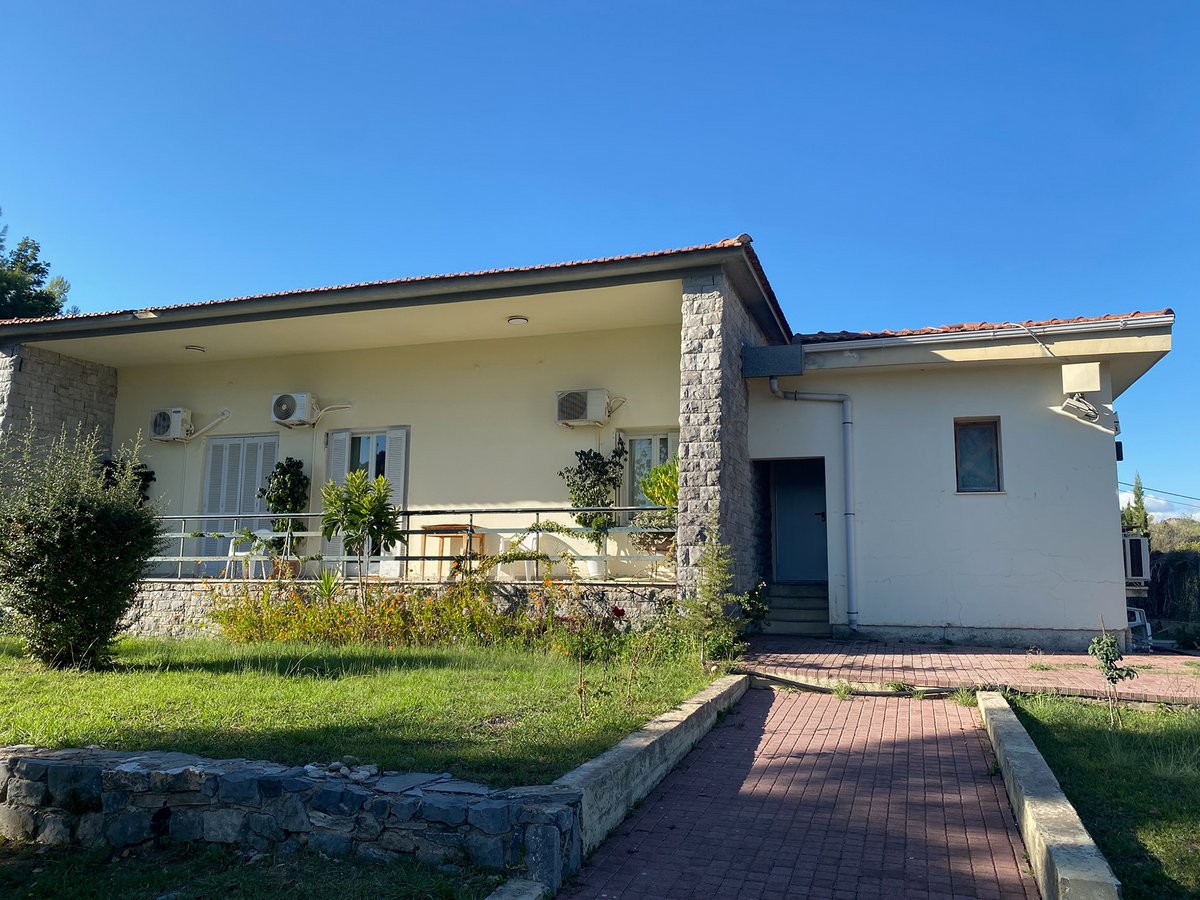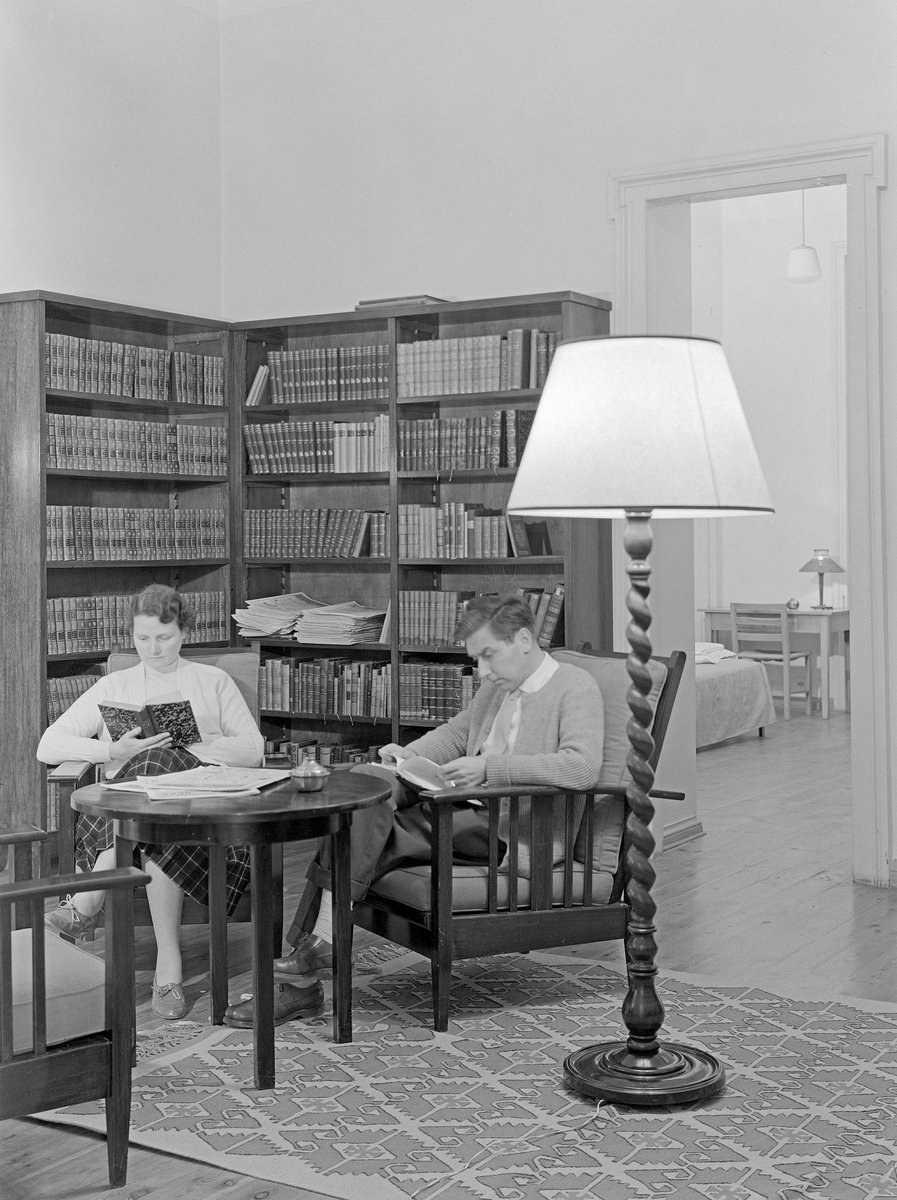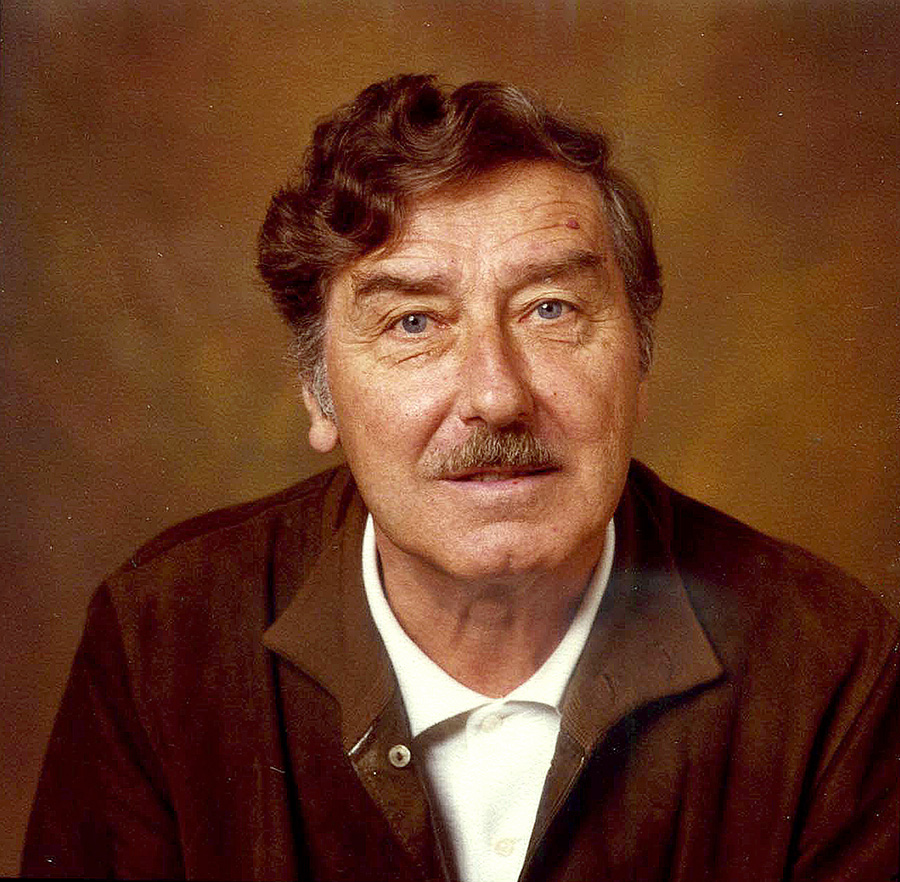Alfred Mallwitz (1919–1986). Architect and artist
With thirty years of service behind him, not only was he the Institute’s senior architectural research specialist, he was also a key figure in its revival in Greece after World War II. His name will forever be associated with Olympia.
Mallwitz’ path to the DAI Athens was dreamlike. Born in Berlin in 1919, his interest in archaeology and art history was sparked during his schooldays (fig. 1).
Fig. 1. Alfred Mallwitz at 18, at Bucharest in 1937. © DAI Athens, Archive// N. N.
In 1940, he spent two semesters studying classical archaeology at the Friedrich Wilhelm University of Berlin, where his lecturers included Gerhard Rodenwaldt. The outbreak of war, however, interrupted his studies. He served as a soldier in Russia, Italy and Denmark, where he was taken as prisoner of war. After his return from the war, he interned on a construction site, which was a prerequisite for studying architecture. Seeing Berlin in ruins stirred him to read architecture at the Technische Universität Berlin, beginning in 1946. He graduated in 1950; the subject of his diploma thesis was the design of a retirement home for 60 people, the construction costs for which were not to exceed 360,000 Marks (AdZ, Biographica Mappe Mallwitz, handwritten resumé, December 31, 1951; fig. 2).
Fig. 2. Model for a retirement home, diploma thesis of Alfred Mallwitz. © DAI Athens, Archive// A. Mallwitz
One of his teachers at the TU Berlin was Walter Andrae (1875–1956), who had himself worked as a building archaeologist in the Near East, and who may have further nurtured Mallwitz’ interest in the specialist study of ancient Bauforschung. Andrae praised Mallwitz´ draughtsmanship and his insight into the problems of architecture (AdZ, Biographica-Mappe Mallwitz, Andrae to Central Directorate, December 14, 1951). Mallwitz’ first scholarly publication, on the Theatre of Babylon (1957), was inspired by Andrae, who had died the year before. This would remain his only publication on Near Eastern architecture.
Fig. 3. Wedding of Alfred Mallwitz and Eva Mühlbach, November 9, 1950. © DAI Athens, Archive// N. N.
In 1951, soon after his marriage to architecture student Eva Mühlbach in 1950 (fig. 3) and the birth of their first son Detlef (*1951), Alfred Mallwitz applied for a DAI travel grant, in order to see historical sites around the Mediterranean with his own eyes. He attached to his application a plan for a dissertation project on the relationship between the cella and the peristasis of Greek temples. It was a decade later that he would eventually develop this topic into an essay focusing on the example of the Temple of Bassae (Mallwitz 1962). He wrote in his application that he intended to work as an excavation architect, devoting himself entirely to the specialist study of ancient built structures that in Germany had come to be known as Bauforschung (AdZ, Biographica-Mappe Mallwitz, Mallwitz to Weickert, December 31, 1951). Mallwitz was not awarded the travel grant, but his application nevertheless marked the beginning of his successful association with the DAI, for which two individuals were of critical influence: the President of the DAI at the time, Carl Weickert, and the Director of DAI Athens, Emil Kunze, the excavator of Olympia. Citing the shortage of younger Bauforscher, at the behest of the Central Directorate, in 1952, Weickert successfully secured a grant from the German Research Foundation (Deutsche Forschungsgemeinschaft, DFG) to fund several months’ work for Mallwitz. As part of his application to the DFG, Weickert outlined Mallwitz‘ duties during this prospective expedition: “periodic participation in excavations in the Heraion of Samos and at Olympia; visits to the most important excavation sites in Greece and Asia Minor in order to learn the excavation methods of the various nations, and to gather practical experience of the ruins through direct observation.“ (AdZ, Biographica Mallwitz, Weickert to DFG, July 24, 1952). But this was only the beginning of Mallwitz’ long career at the DAI Athens.
He was first engaged in 1952 by Ernst Buschor for a month on the excavation in the Heraion of Samos that had just resumed. Here, he studied the rigorous methodology of German Bauforschung in the field alongside the Bauforscher Oskar Ziegenaus (1903–1990). The then young student Gottfried Gruben was also part of that season’s team, and it is to Gruben that we owe a photograph of Ziegenaus and Mallwitz, which he later sent to him as a souvenir (fig. 4).
Fig. 4. Oskar Ziegenaus instructing Alfred Mallwitz in the methodologies of German Bauforschung, Samos, 1952. © DAI Athens, Archive// Gottfried Gruben
A series of delightful pencil and ink drawings of churches and the living conditions of Samos also dates from this time (fig. 5).
Fig. 5. This pencil drawing by Mallwitz shows the village Heraion in 1952. At the time, the German excavation house was the second building on the left. © DAI Athens, Archive// Alfred Mallwitz
In November 1952, Mallwitz then came to Kunze at Olympia, where he received further instruction in archaeological Bauforschung from Friedrich Krauss (1900–1977), professor of architectural history at the Technische Universität Munich and, like Ziegenaus, a pupil (and successor) of Hubert Knackfuss. It was in 1952 that the new survey of the Temple of Zeus began. Even on this first assignment, it was already clear that Mallwitz was an extraordinary talent with remarkable energy. Early in 1953, Emil Kunze wrote glowingly to Weickert: “Mallwitz, who already has considerable knowledge and pronounced scientific gifts, is decidedly one of the few hopes for the future of our architectural research [Bauforschung], and it would be a matter of great importance to us to facilitate his ultimate transition into this discipline. The moment such an opportunity arises (for instance, when an academic assistant position opens up), I would like to tie him to the Athenian Institute. He would be outstandingly suitable for the Institute’s excavation assignments. His energy in work can only be matched by that of Schleif.“ (Archiv DAI Athen, Allgemeine Korrespondenz Kunze 1953, Kunze to Weickert, January 27, 1953.)
From now on, Mallwitz worked regularly as excavation architect on the Olympia excavation, initially while on leave from the Berlin-Schöneberg Urban Planning Office in 1953. He became contracted to the DAI Athens in 1954, which also meant moving his family to Athens, where his sons Friedrich (*1955) and Karl (1956–2021) were soon born (fig. 6).
Fig. 6. Family portrait marking the baptism of youngest son Karl in Berlin in 1957. © DAI Athens, Archive// N. N.
Mallwitz would be employed by the DAI Athens for the next three decades, with the main focus of his work remaining at Olympia. For the first few years, he was nominally responsible for the library, only officially becoming responsible for architectural research in 1956. He was made Academic Councillor (Akademischer Rat) for Olympia in 1969, then Senior Academic Councillor (Akademischer Oberrat) in 1971. He earned his doctorate in 1960 with a dissertation on the Workshop of Pheidias (later the Basilica) at Olympia. In 1962/63, he prepared the new general plan of the site, and was Excavation Director at Olympia from 1972 until his retirement in 1984. His last scientific projects conducted on-site were the excavations in the southwest, which, like the roof terracottas on which he had been working since the early 1960s, he was not able to complete himself. Wolf Koenigs described Mallwitz’ way of working as follows: “Drawing on both broad and specialist knowledge of the subject, A. Mallwitz prepared reconstructions of buildings at Olympia on the basis of his own findings, deduced carefully from the object, which he described lucidly and illustrated with great graphic clarity” (DAI Athens, oral archive). His one-time colleague at the DAI Athens, Gerhild Hübner, responsible for the photographic department from 1976 to 1980, also remembered him with great respect: “From the outset, at the Institute A. Mallwitz impressed me the most, who was later Excavation Director at Olympia – both by the deliberation of his archaeological approach and by the circumspection of his human appraisals.“ (DAI Athens, oral archive).
Firm friendships also developed on site in Olympia over the many years spent working together. Mallwitz himself always emphasised the excellent collaboration with his Greek team, especially the foreman Alkis Spiliopoulos – but also with the cook, Ilias Chrysostomos. Many photographs attest to their lively exchanges both professional and social (fig. 7).
Fig. 7. Easter at Olympia, with Heinrich Bartels, Ilias Chrysostomos, Alkis Spiliopoulos and the three Mallwitz boys, 1961. © DAI Athens, Archivs// Eva Mallwitz
Mallwitz was much in demand, not just at Olympia, but also on other archaeological projects.
Fig. 8. Mallwitz in 1954 at the architectural survey on Xobourgo on Tinos. © DAI Athens, Archive// N. N.
From 1952 to 1954, he worked with Nikolaos Kontoleon on the Xobourgo mountain on Tinos (fig. 8), and in 1954 on Naxos. He joined his former sponsor Carl Weickert at Miletus in Asia Minor (1955, 1957, 1963), introducing the pumping system without which it would have been impossible to excavate the marshy ground of the Sanctuary of Athena (fig. 9).
Fig. 9. Mallwitz with Gerhard Kleiner (left, back to camera), Carl Weickert (far right) and others at Miletus, 1955. © DAI Athens, Archive// N. N.
He investigated the tomb at the third horos of the Athenian Kerameikos (1956/57), worked at the Temple of Apollo in Bassae, one of his favourite sites (1952 onwards), conducted architectural documentation work of the east pediment of the Parthenon (with Frank Brommer, 1959), of the bases identified in the Tower of the Winds (for Andreas Rumpf, 1960) and of the Gate of Herod Atticus at Marathon (for Peter Franke, 1963). Following the death of Gerda Bruns, he completed the publication of the architecture of the Sanctuary of the Kabiroi at Thebes (1970 onwards), and worked with the Greek archaeologist Georgios Dontas on the Kardaki Temple on Corfu (1976–1981, fig. 10). The Greek Ministry of Culture sought his advice in 1976 ahead of the restoration of the Theatre of Dionysus in Athens.
Fig. 10. Mallwitz with the excavation team at the Kardaki Temple on Corfu in 1976. © DAI Athens, Archive// Eva Mallwitz
Some assignments that were offered to him, however, he refused. Mallwitz had acted as consultant from 1965 for the planned resumption of the Bavarian excavation project at Aegina Kolonna, whereupon Kunze proposed that, when the excavations were due to begin there in 1967, he should take on their technical management alongside Hans Walter. But Mallwitz was reluctant. He liked to keep his professional and private lives separate, and Aegina had been part of his private life since the construction of the family holiday home opposite Cape Colonna in 1962/63 (fig. 11). The family now spent most holidays there, often receiving visits from friends, some from the world of the Institute, such as Maria Tzannetaki and family, Eva-Maria Czakó , Ulrich Hausmann and many others.
Fig. 11. The holiday house on Aegina designed by Alfred Mallwitz. © DAI Athens, Archive// Alfred Mallwitz
Mallwitz did not just work as a building archaeologist, but also as a heritage conservator and an architect. As early as 1957, he supervised the erection of 57 ancient columns in the Olympian Palaestra, and beginning in 1970 (with the support of his colleague Klaus Herrmann) that of the Nike Pillar, a column in the Temple of Hera and the south wall of the stadium entrance. The arrangement of the excavation area at Olympia can be traced back to him, and it was Mallwitz who conceived and implemented one of the largest projects in the history of the DAI Athens, the backfilling of the stadium walls at Olympia that today gives such a good impression of this sporting arena. Mallwitz shared his expertise not just with the specialist community, but also with an interested public. One testament to this is the large model of the Olympia excavation, made by his wife Eva under his scholarly supervision for the major Olympia exhibition at Essen (1958-59). In 1963, the city of Essen presented a copy of this model to the Greek government, and it remains in the museum at Olympia today (fig. 12).
Fig. 12. The copy of the Essen model of the Sanctuary of Olympia, exhibited at Olympia © DAI Athens, Photoarchive// Gösta Hellner
Of public interest is also the guidebook “Olympia und seine Bauten” (“Olympia and its Buildings”, Mallwitz 1972), which to this day remains an indispensable companion while exploring the ruins. Buildings designed by Mallwitz the architect include the storage rooms in the Kerameikos (1956) and at Olympia (1957), the excavation houses at Miletus (1957) and Olympia (1969), the infirmary at Olympia (1962) (fig. 13), as well as other structures such as the core of the Hotel Pelops in Olympia and private dwellings like his own summerhouse on Aegina (fig. 11);
Fig. 13a. The infirmary at Olympia, endowed by Theodor Heuss, designed and built under the direction of A. Mallwitz. At its topping-out ceremony. © DAI Athens, Archive// Alfred Mallwitz
Fig. 13b: The newly-built infirmary at Olympia, c. 1962. © DAI Athens, Archive// Alfred Mallwitz
The infirmary at Olympia, state in 2025. © DAI Athens// Katja Sporn
In Athens, Mallwitz was involved for many years with the renovation and alteration work in the Institute’s historic building in the Pheidiou. The renovation of the Fellows’ Rooms (1955), the installation of the new photographic laboratory (1959) and the conversion of the former director’s apartment on the first floor into offices (1968) are among the developments he supervised (fig. 14).
Fig. 14. The Mallwitzes in the Fellows’ Rooms newly renovated under Mallwitz’ supervision, 1955. © DAI Athens, Photoarchive// Eva Maria Czakó
When he retired from his work with the DAI Athens in 1984, Mallwitz could look back on a life of great accomplishment (fig. 15).
Fig. 15. Alfred Mallwitz, c. 1980. © DAI Athens, Archive// N. N.
For him, having lost his heart to Greece and passed the same love on to his children, this meant having been able to call the country home for 30 years. His achievements relating to the excavation of Olympia earned him the highest decoration of the Federal Republic of Germany, the Order of Merit (Bundesverdienstkreuz) 1st Class.
Another side of Mallwitz, however, is less well known: the watercolours and hand drawings of Greek architecture and landscapes, most of which he made on family holidays and which do not dwell on ancient culture at all, as well as his many photographs that offer us glimpses of the country and its people before the onset of mass tourism. An exhibition at the Goethe-Institute Athens marking the 150th anniversary of the German Olympia excavations (October 9 – December 7, 2025) is showing a selection of 24 original watercolours, mostly of the Greek islands (Aegina, Amorgos, Hydra, Kea, Corfu, Lesbos, Naxos, Melos, Seriphos (fig. 16), Siphnos, Skyros), but also of the Greek mainland (Pylos and Pelion) and Miletus (Turkey), along with drawings, photographs and private documents.
Fig. 16. Seriphos, watercolour by Mallwitz 1972. © DAI Athens, Archive// Alfred Mallwitz
These are part of a valuable private bequest that recently came to the DAI Athens thanks to a generous donation by Alfred’s eldest son, Detlef, on behalf of his heirs. Together with his academic estate, they bear witness to the multifaceted work of Alfred Mallwitz as Bauforscher, architect, and artist.
Works cited and further reading:
Herrmann 1986
K. Hermann, Alfred Mallwitz, 1919–1986 and bibliography, AM 101, 1986, VI-XIV
Herrmann 1988
K. Herrmann, Alfred Mallwitz, in: W. Schiering, Archäologenbildnisse (Mainz 1988) 325–326
Mallwitz 1962
A. Mallwitz, Cella und Adyton des Apollontempels in Bassai, AM 77, 1962, 140–177
Mallwitz 1972
A. Mallwitz, Olympia und seine Bauten (Munich 1972)
Mallwitz – Sporn 2025
D. Mallwitz – K. Sporn, Olympia und Griechenland 1952–1984: Entdeckungen im Werk von Alfred Mallwitz; Ausstellung im Goethe -Institut Athen vom 10. Oktober bis 7. November 2025 : Ολυμπία και Ελλάδα 1952-1984: Ανακαλύψεις στο έργο του Alfred Mallwitz; Έκθεση στο Ινστιτούτο Goethe της Αθήνας 10 Οκτωβρίου έως 7 Νοεμβρίου 2025
